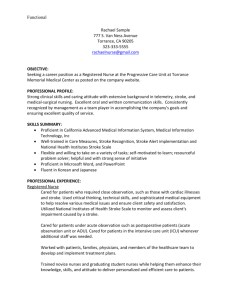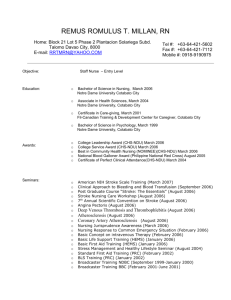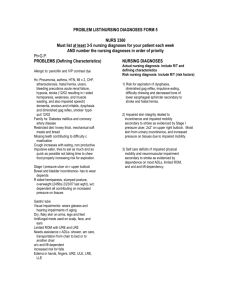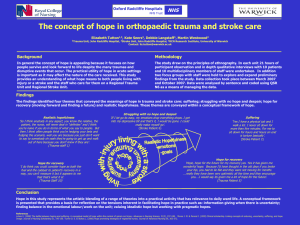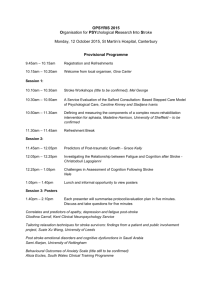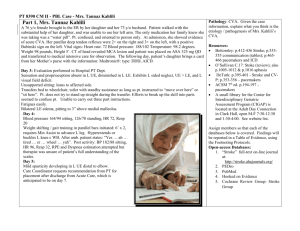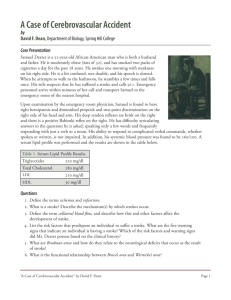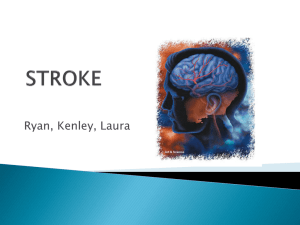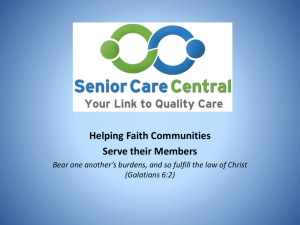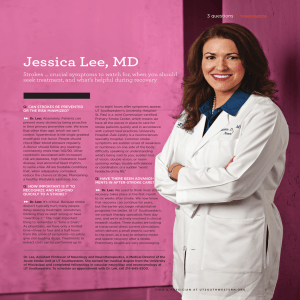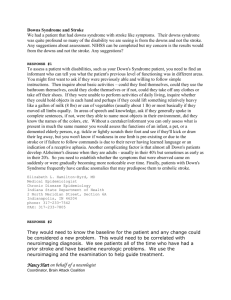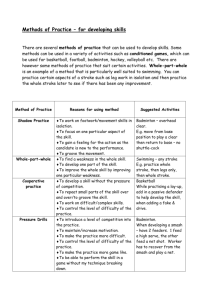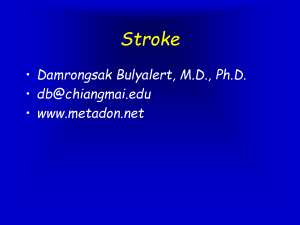Stroke脑卒中 - Senior Care Central
advertisement
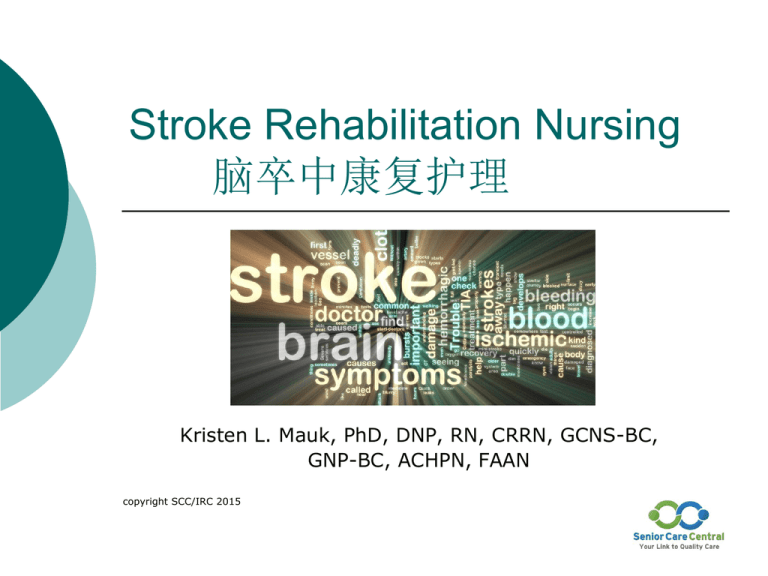
Stroke Rehabilitation Nursing 脑卒中康复护理 Kristen L. Mauk, PhD, DNP, RN, CRRN, GCNS-BC, GNP-BC, ACHPN, FAAN copyright SCC/IRC 2015 Objectives任务 Define stroke定义脑卒中 Recognize statistics related to stroke了解脑 卒中的统计数值 Analyze the pathophysiology of the three major types of stroke分析主要的三类脑卒中的 病理生理学 Discuss risk factors related to stroke讨论与 脑卒中相关的危险因素 List warning signs of stroke列出提示发生脑卒 中的信号 Objectives任务 Describe the medical treatment for acute CVA描述急性脑血管意外的治疗 Understand nursing interventions related to care of the patient with stroke理解与照护脑 卒中患者相关的护理干预 Name three strategies to prevent stroke指 出三个预防脑卒中的策略 Discuss the Mauk model for post-stroke rehabilitation 讨论默克模式对脑卒中后的康复 Strokes in China (World Heart Federation, 2015) 脑卒中在中国的情况(世界心脏联盟,2015) In China, 1.3 million people have a stroke each year 中国每年有130万人患脑卒中 75% of these have varying degrees of disability as a result of stroke 他们中75%的 人由于脑卒中而存在不同程度地残疾。 China’s risk factors (US CDC report, 2010 – 2011) 中国的风险因素(美国疾控中心报告,2010-2011) Hypertension is higher in China, possibly due to higher sodium intake…leading to more strokes在中国可能由于钠的摄入较多,高 血压患病率高,导致卒中发生率高 Smoking is a risk factor 吸烟是一个危险因素 Over 50% of men in China smoke在中国超过 50%的男人吸烟 Less than 3% of women smoke少于3%的女人 吸烟 82% of China’s disease burden is due to noncommunicable diseases (NCDs) such as stroke中国82%的疾病属于非传染性疾病例如中风 China’s NCDs 中国的非传染性疾病 Leading causes of death (80% of all deaths)死 亡的主要原因(80%的人死于非传染性疾病) Heart disease心脏病 Cancer癌症 Stroke脑卒中 Diabetes糖尿病 Chronic respiratory problems慢性呼吸道疾病 Source: http://www.cdc.gov/globalhealth/countries/china/pdf/us_china-biennialreport_2010-11.pdf Initial Evaluation: F-A-S-T 初步评估:脸-胳膊-言语-时间 Three easy signs三个简单信号 Facial droop脸下垂 Motor weakness (arm lift)运动无力(手臂提升) Language difficulties言语困难 Slurring, wrong words, no speech说话含糊,说 错词,不说话 expectations social support faith age life experience knowing the cause The Mauk Model of Post-stroke Recovery Mauk的中风后恢复模型 Summary of major tasks 主要任务的总结 Phase Agonizing Survivor task survival Nursing task protection and physical care Fantasizing ego protection reality orientation and emotional support Realizing facing reality emotional and psychosocial support Blending adaptation teaching Framing reflection listening; providing reason for the stroke Owning moving on enhancing inner and community resources Websites网址 www.stroke.org www.strokeassociation.org www.americanheart.org www.geronurseonline.org www.rehabnurse.org


